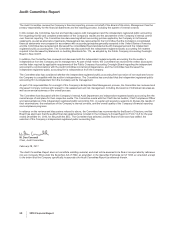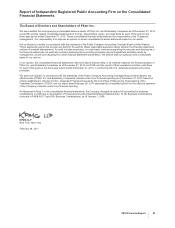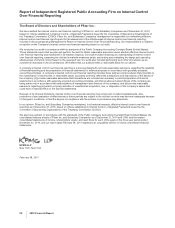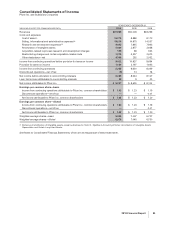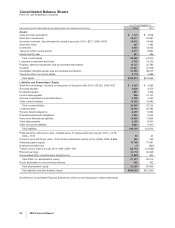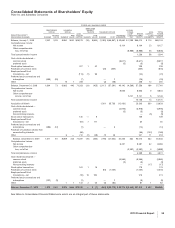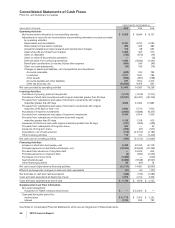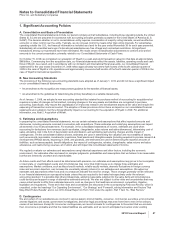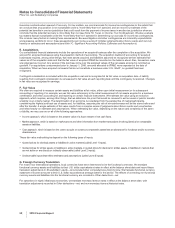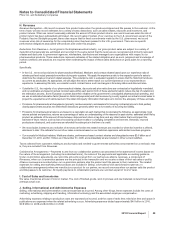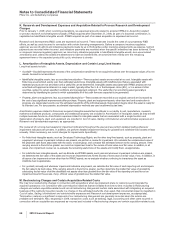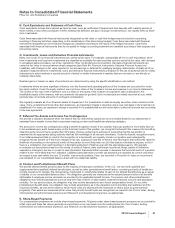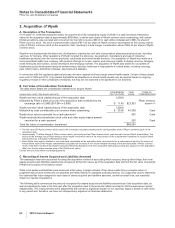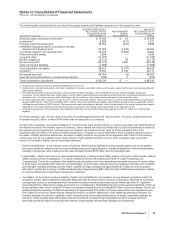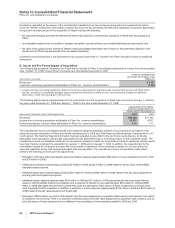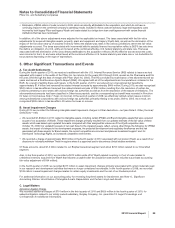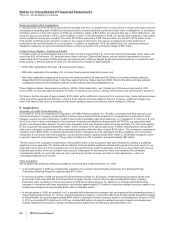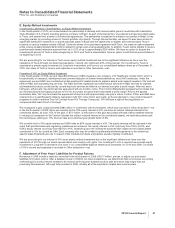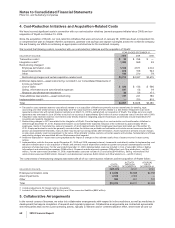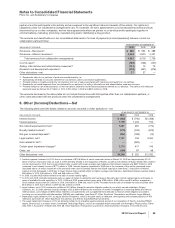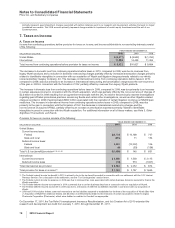Pfizer 2010 Annual Report Download - page 62
Download and view the complete annual report
Please find page 62 of the 2010 Pfizer annual report below. You can navigate through the pages in the report by either clicking on the pages listed below, or by using the keyword search tool below to find specific information within the annual report.
Notes to Consolidated Financial Statements
Pfizer Inc. and Subsidiary Companies
K. Research and Development Expenses and Acquisition-Related In-Process Research and Development
Charges
Prior to January 1, 2009, when recording acquisitions, we expensed amounts related to acquired IPR&D in Acquisition-related
in-process research and development charges. IPR&D acquired after December 31, 2008, as part of a business combination, is
capitalized as Identifiable intangible assets. IPR&D acquired as part of an asset acquisition is expensed as incurred.
Research and development (R&D) costs are expensed as incurred. These expenses include the costs of our proprietary R&D
efforts, as well as costs incurred in connection with certain licensing arrangements. Before a compound receives regulatory
approval, we record upfront and milestone payments made by us to third parties under licensing arrangements as expense. Upfront
payments are recorded when incurred, and milestone payments are recorded when the specific milestone has been achieved. Once
a compound receives regulatory approval, we record any milestone payments in Identifiable intangible assets, less accumulated
amortization and, unless the assets are determined to have an indefinite life, we amortize them evenly over the remaining
agreement term or the expected product life cycle, whichever is shorter.
L. Amortization of Intangible Assets, Depreciation and Certain Long-Lived Assets
Long-lived assets include:
•Goodwill—Goodwill represents the excess of the consideration transferred for an acquired business over the assigned values of its net
assets. Goodwill is not amortized.
•Identifiable intangible assets, less accumulated amortization—These acquired assets are recorded at our cost. Intangible assets with
finite lives are amortized evenly over their estimated useful lives. Intangible assets with indefinite lives that are associated with
marketed products are not amortized until a useful life can be determined. Intangible assets associated with IPR&D projects are not
amortized until approval is obtained in a major market, typically either the U.S. or the European Union (EU), or in a series of other
countries, subject to certain specified conditions and management judgment. The useful life of an amortizing asset generally is
determined by identifying the period in which substantially all of the cash flows are expected to be generated.
•Property, plant and equipment, less accumulated depreciation—These assets are recorded at our original cost and are increased by
the cost of any significant improvements after purchase. Property, plant and equipment assets, other than land and construction in
progress, are depreciated evenly over the estimated useful life of the individual assets. Depreciation begins when the asset is ready for
its intended use. For tax purposes, accelerated depreciation methods are used as allowed by tax laws.
Amortization expense related to finite-lived acquired intangible assets that contribute to our ability to sell, manufacture, research,
market and distribute products, compounds and intellectual property are included in Amortization of intangible assets as they benefit
multiple business functions. Amortization expense related to intangible assets that are associated with a single function and
depreciation of property, plant and equipment are included in Cost of sales, Selling, informational and administrative expenses and
Research and development expenses, as appropriate.
We review all of our long-lived assets for impairment indicators throughout the year and we perform detailed testing whenever
impairment indicators are present. In addition, we perform detailed impairment testing for goodwill and indefinite-lived assets at least
annually. When necessary, we record charges for impairments. Specifically:
•For finite-lived intangible assets, such as Developed Technology Rights, and for other long-lived assets, such as property, plant and
equipment, whenever impairment indicators are present, we perform a review for impairment. We calculate the undiscounted value of
the projected cash flows associated with the asset, or asset group, and compare this estimated amount to the carrying amount. If the
carrying amount is found to be greater, we record an impairment loss for the excess of book value over fair value. In addition, in all
cases of an impairment review, we re-evaluate the remaining useful lives of the assets and modify them, as appropriate.
•For indefinite-lived intangible assets, such as Brands and IPR&D assets, each year and whenever impairment indicators are present,
we determine the fair value of the asset and record an impairment loss for the excess of book value over fair value, if any. In addition, in
all cases of an impairment review other than for IPR&D assets, we re-evaluate whether continuing to characterize the asset as
indefinite-lived is appropriate.
•For goodwill, annually and whenever impairment indicators are present, we calculate the fair value of each reporting unit and compare
the fair value to its book value. If the carrying amount is found to be greater, we then determine the implied fair value of goodwill by
subtracting the fair value of all the identifiable net assets other than goodwill from the fair value of the reporting unit and record an
impairment loss for the excess, if any, of book value of goodwill over the implied fair value.
M. Restructuring Charges and Certain Acquisition-Related Costs
We may incur restructuring charges in connection with acquisitions when we implement plans to restructure and integrate the
acquired operations or in connection with cost-reduction initiatives that are initiated from time to time. Included in Restructuring
charges and certain acquisition-related costs are all restructuring charges and certain costs associated with integrating an acquired
business (if the restructuring action results in a change in the estimated useful life of an asset, that incremental impact is classified in
Cost of sales, Selling, informational and administrative expenses and Research and development expenses, as appropriate).
Termination costs are a significant component of our restructuring charges and are generally recorded when the actions are
probable and estimable. Also, beginning in 2009, transaction costs, such as banking, legal, accounting and other costs incurred in
connection with an acquisition are expensed as incurred and included in Restructuring charges and certain acquisition-related costs.
60 2010 Financial Report


